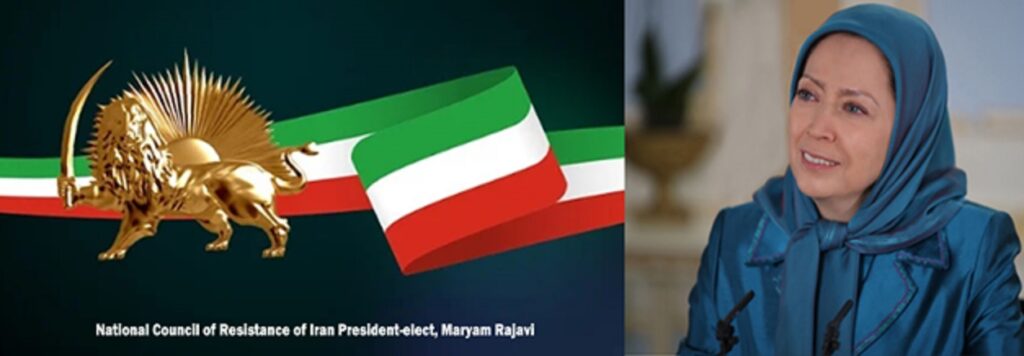Telegraph | Maryam Rajavi | December 30, 2024
With the fall of Syria’s dictator, one of Tehran’s most crucial allies, the overthrow of Iran’s theocratic regime has become more plausible than ever. In response, regime Supreme Leader Ali Khamenei is likely to pursue the most perilous course imaginable: equipping the world’s foremost sponsor of terrorism with nuclear weapons.
Recent revelations from the Iranian Resistance indicate that Tehran has accelerated its pursuit of an atomic bomb. This reckless gambit is aimed at deflecting mounting domestic crises while compensating for its strategic failures across the region.
For over four decades, Iran’s ruling mullahs have maintained their grip on one of the world’s oldest and most storied civilisations through a dual strategy: ruthless repression within their borders and belligerence abroad, marked by the export of terrorism and aggression across the region and beyond.
The survival of the Iranian regime is deeply intertwined with its meddling in the region, and Syria served as the linchpin of this strategy. The Assad regime’s alliance with Tehran allowed Iran’s Islamic Revolutionary Guard Corps (IRGC) to establish a direct corridor to the Mediterranean, extending its influence to Lebanon and empowering its most critical proxy, Hezbollah.
Tehran funnelled at least $50 billion into the Syrian conflict between 2012 and 2020. This immense financial commitment was matched by human costs, as thousands of IRGC troops, including dozens of high-ranking commanders, were killed protecting the Assad regime.
In an admission of Syria’s importance, in a meeting with the families of the regime forces killed in Syria, in January 2017, Khamenei said, “If the enemies and seditionists were not stopped there … we would have had to stop them in Tehran.”
Mullah Mehdi Ta’eb, a close confidant of Khamenei, declared in February 2013: “Syria is our 35th and strategic province. If the enemy attacks us and forces a choice between Syria and Khuzestan (Iran’s oil-rich province), our priority is to hold Syria.” He further emphasized, “If we retain Syria, we can reclaim Khuzestan. But if we lose Syria, we cannot even hold Tehran.”
The mullahs now find themselves at their weakest point in decades. Assad’s fall is a seismic event that delivers a resounding message to Iran’s disillusioned youth and rebellious people: even the heavily armed forces of Assad’s regime, bolstered by tens of thousands of IRGC Quds Force operatives, collapsed in a mere 11 days – dissolving like snow under the summer sun. Khamenei’s armed forces are in no better condition.
Over the past six years, Iran’s regime has been rocked by four nationwide uprisings and countless smaller protests, culminating in the sweeping 2022 uprising. The underlying drivers of this unrest, including a crumbling economy, rampant inflation, staggering unemployment, entrenched corruption, and systemic repression – particularly targeting women – have only worsened.
In an attempt to stifle dissent, the regime has unleashed an unprecedented wave of executions, with over 650 carried out in less than five months under its new president, Masoud Pezeshkian.
The mullahs now face a perilous dilemma, each option fraught with existential risk. They can either retreat from their decades-long strategy of exporting terrorism, warmongering, and pursuing nuclear weapons, or continue to defy the international community.
All indications suggest that Khamenei perceives the first path as the more immediate threat to his regime’s survival, fearing it would hasten its collapse. For over three decades, the international community’s efforts to deter Tehran from these destabilising behaviours have proven fruitless. Until the regime itself is overthrown, such efforts are likely to continue meeting the same fate.
To address the crisis in Iran, sanctions and international pressure, while necessary, are insufficient on their own. The ultimate solution lies in an Iranian answer: regime change led by the people and the organised Resistance.
The essential elements for this transformation are already in place. An experienced, organised resistance network with thousands of committed members operates alongside an alternative with broad social backing and international recognition. This opposition has articulated a clear political programme and a practical roadmap for establishing a free and democratic society.
At the heart of this movement are Iran’s disillusioned population and the Resistance Units, driving the engine of change. According to plan formulated by the National Council of Resistance of Iran (NCRI) – a democratic coalition of opposition forces – following the regime’s overthrow, an interim government will form for no more than six months. Its primary mission will be to hold free and fair elections for a Constituent Assembly, transferring sovereignty to the people’s representatives. This assembly will then elect a new interim government tasked with drafting a constitution for the new republic within two years.
This vision for a free Iran leaves no room for chaos. It envisions a nation founded on democracy, where legitimacy is determined by the ballot box, women enjoy full equality, nationalities and minorities are autonomous and respected, Shi’ites, Sunnis and other religions are equal, religion and state are separated, and peace is prioritised. A non-nuclear Iran committed to regional stability would emerge as a force for progress in the Middle East.
With the Iranian regime mired in its most profound existential crisis and the Iranian people resolved to chart a new course, the international community must adopt a bold and realistic policy. It must deny the regime any chance of survival and fully recognise the Iranian people’s right to overthrow their oppressors. This policy should include holding the regime accountable for its repression, terrorism, and nuclear ambitions.
Such an approach in 2025 would pave the way for lasting peace and stability in the region and beyond. The prospect of a democratic, secular, and pluralistic Iran is now closer than ever.
Maryam Rajavi is the President-elect of the National Council of Resistance of Iran
https://news.yahoo.com/news/west-must-back-regime-change-115242370.html

